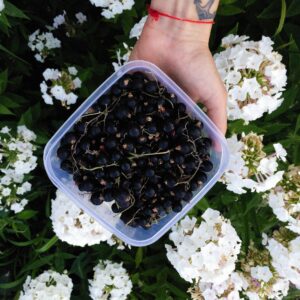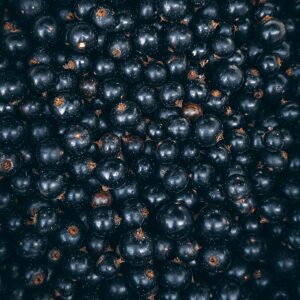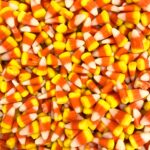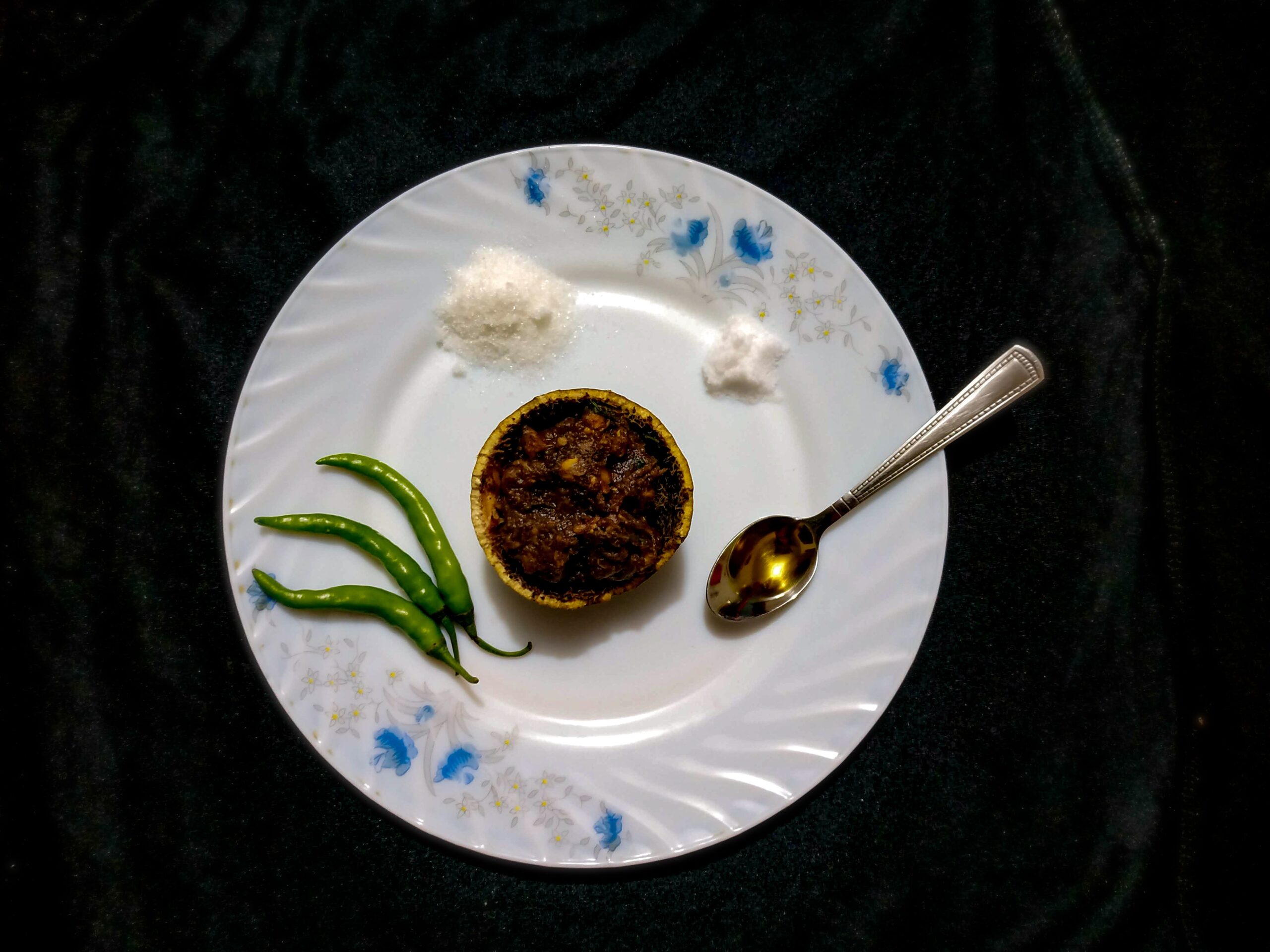What is Blackcurrant?
Blackcurrant belongs to the family Grossulariaceae (Ribes family). The Ribes nigrum is a perennial shrub that grows to about 1-2 meters tall. It is native to Europe and parts of Asia but is grown all over the world. Blackcurrant produces edible, purple-black berries that taste sweet and contain seeds. They can be grown on the ground or in pots.

How does Blackcurrant work?
Blackcurrant (Ribes nigrum) contains a particularly high level of anthocyanins and is a rich source of both the omega-3 fatty acid alpha-linolenic acid (ALA) and omega-6 fatty acid gamma-linolenic acid (GLA). The four major anthocyanins identified from black currant are delphinidin-3-O-rutinoside, delphinidin-3- O-glucoside, cyanidin-3-O-rutinoside, and cyanidin-3-O-glucoside. The anthocyanin content in black currant varies from 80-280 mg per 100 grams of fruit.
Amazing benefits of Blackcurrants
● Immunological benefits are associated with eating blackcurrants regularly
● High-fiber content contributes to gastrointestinal health
● Blackcurrants are rich in Vitamin C which helps prevent common diseases
● Blackcurrant has a lot of antioxidants
● Anti-inflammatory
● Anti-microbial
● Antiviral and antitoxic

21 interesting facts about Blackcurrant
- Blackcurrant are winter-hardy, or they are not susceptible to winters, though they may shrink in size when bloomed in cold temperatures.
- In the summer, blackcurrants grow out of the stems and can be picked with hands or machines.
- It can be eaten raw or cooked in sugary or savory dishes.
- Blackcurrant bodes well for the flouring juice market industry.
- Blackcurrants are affected by several pests and diseases. They are hit hard by gall mites which causes the disease ‘reversion.’ It causes a decline in yield.
- In the 20 th century, blackcurrant cultivation was moderated in several parts of the United States, as they carried the infectious white pine blister rust, which caused damage to the native white pines and perished the forest.
- Blackcurrant like well-drained moisture absorptive soil conditions better.
- The appropriate time to plant a blackcurrant plant is during the resting or dormant season, from October to March. It is advisable to avoid planting them during harsh winters.
- These plants yield high-quality blackcurrant when grown in areas that have humid summers and cold winters.
- The leaves of blackcurrant plants are palmately-lobed in the shape of maple leaves and arranged alternately on the stem.
- Blackcurrant plants have racemes of small flowers. Dark purple berries follow the flowers, and they bloom during spring.
- The blackcurrant flowers are shaped like a bell, and they self-pollinate.
- Blackcurrants contain small edible seeds (3 to 12 seeds). They have smooth, rough skin, and the soft pulpy flesh is juicy.
- Blackcurrants come in black, red, and pink colors. Blackcurrants are richer in Vitamin C and musky scent compared to their varieties.
- In Russia, blackcurrant leaves are used as condiments to produce vodkas and teas.
- Studies have shown the presence of certain substances in blackcurrants that improve the circulation of blood and the eyes’ function.
- Blackcurrant are known to be perennial plants and have existed for 15 to 30 years.
- As long as their nutrient needs are met, blackcurrants can grow on forest soils or heavy loams.
- They need nutrients like nitrogen, phosphorus, potassium, magnesium, and calcium to thrive, stimulate the production of flower sprigs and cell division, and increase the weight of fruits.
- Raw blackcurrants are 82% water, 15% carbohydrates, 1% protein, and 0.5% fat.
- Blackcurrant seed oil is used in cosmetic preparations along with vitamin E. Culinary uses Blackcurrants are widely used to make jams and jellies. They are set up properly because of high pectin and acid. Blackcurrant preserves are made from the puree when the fruit is cooked with sugar. This
preserve is included in making cheese, ice cream, yogurt, sorbets, desserts, and other sweets. The juice is used to make drinks, syrups, and cordials.

Is Blackcurrant safe?
Blackcurrant is a superfood that has been used safely by people worldwide for a long time. A lot of scientific research has been done with Blackcurrant, and there have never been any results questioning its safety.
Dosage
When using blackcurrant syrup, the recommended dose is 5 to 10 grams daily or 500 mg of blackcurrant extract. For intensive exercise and therapeutic purposes, higher doses can be used, taking into account the person, interactions, indication, etc. Are there any side effects? Blackcurrant is very safe with no known side effects or drawbacks.
Of course, there can be a personal sensitivity, which means you can get some intestinal complaints at higher doses, for example. This is very rare.
Internal links:
King of fruits: Dasheri Mangoes You should take it to get many medicinal benefits
Interesting Facts about Breadfruit– Erakina
Jackfruit Patties & More-Erakina
External links:
Date: 01/08/2022






